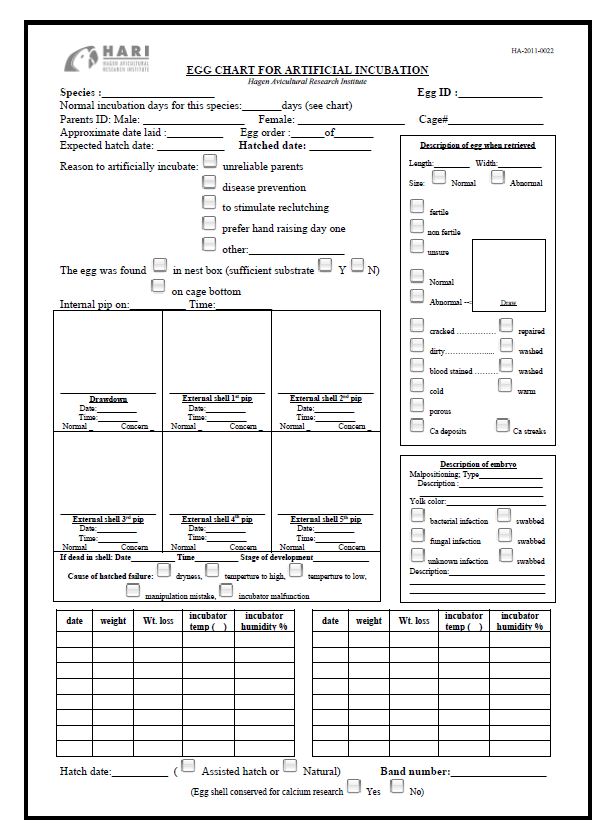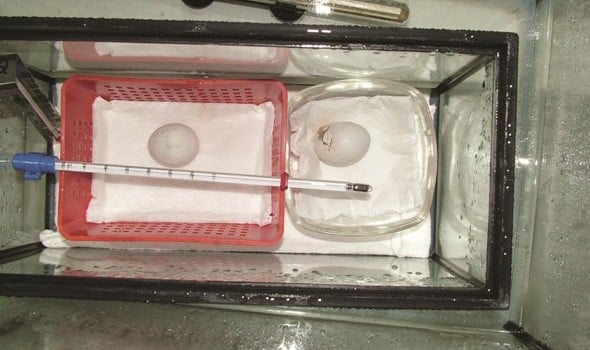
Artificial Incubation Egg Monitoring Chart
Aviculturist-breeders who must retrieve eggs to the incubator can use this practical data keeping form to aid in the daily evaluation of each egg they are monitoring. This form is used at the HARI facility to help us keep accurate data and assist in the monitoring of the health of the embryonic development. This data can also help assess the health of the breeding pairs as eggs can reveal nutritional deficiencies, fertility challenges, unskilled egg brooding, diseases and bacterial infections.
Diligent Monitoring of the Incubators
Artificial incubation requires diligent monitoring of the incubators for proper calibration to ensure optimal temperature, humidity, and egg turning schedule for the specific species it hosts. The hygienic maintenance of these is primordial to ensure no contamination (bacterial, fungal or viral) can be transmitted to the eggs. Despite the technological innovations seen in the models available for aviculturists in this new era, daily monitoring is still required to ensure optimal conditions are provided for the successful development of the eggs.
Individual Monitoring of Eggs is a Must
Eggs must be monitored individually for any challenges they may encounter based on their specific physical properties. The number of eggs laid in a clutch as well as the egg measurements can reveal abnormal shape and size, which can reflect egg production challenges, in which case the hen should be closely monitored and perhaps not stimulated to lay another clutch until a thorough physical exam can be performed to rule out any nutritional or health disorders. Eggs that may regrettably have a very thin shell will need to be monitored more regularly as these may suffer weight loss more rapidly and have a higher risk of contamination from their environment. 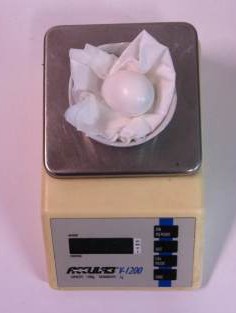 Eggs that might have been repaired due to a damaged eggshell, crack or pick, will also be closely monitored and may require assistance at hatch.
Eggs that might have been repaired due to a damaged eggshell, crack or pick, will also be closely monitored and may require assistance at hatch.
Eggs that may have been artificially incubated due to unreliable or inexperienced brooding pair may be replaced in the pairs’ nest close to hatching, if artificial eggs were used temporarily to encourage the pair to continue to brood. Selecting a reliable foster pair to care for hatchlings can also be an option should you prefer natural parent rearing.
Any egg that regrettably fails to hatch must be removed as soon as the DIS (Dead In-Shell) is confirmed as these will release bacteria that can contaminate the other eggs found within the same incubator.
Egg necropsies can be performed to confirm the stage of embryonic death and perhaps unveil the cause of DIS. This information should be recorded in the breeding pairs breeding evaluation forms as well. Egg weight loss can be monitored daily if you are extremely delicate and careful not to shake them or turn them while you are handling them to be weighed. Disturbing the eggs without being extremely delicate in the first 4 days can cause early DIS.
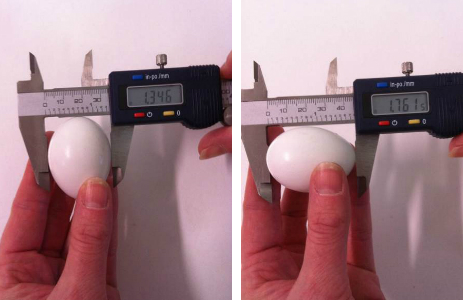
Candling Eggs for Daily Monitoring Presents Less Risk
If daily measuring of the egg is evaluated as too risky, then simply weigh them when they get placed in the incubator and then monitor daily without handling them but by candling with a pen light directly in the incubator until they have reached their 4th day of incubation. Care will be required nonetheless following these sensitive first days every time you are weighing or candling the eggs. It is preferable never to turn the eggs while candling. The pen light should rotate around the eggs instead to inspect the whole egg if you choose to hold it delicately during this process. If the egg presents itself while it lies in the incubator on the right side (early embryonic development ring can be seen) to allow a thorough inspection while candling, then there is no need to handle the egg further for candling purposes. As the embryonic development stages progress it might be more challenging to thoroughly candle without handling. Egg candling techniques will be discussed in another article as this is a complex topic, but without a doubt, it can reveal valuable information such as an egg that is not properly turned if embryonic chick is not evenly utilizing all the space under the air cell, or black spots on the interior of the shell membrane can be caused by bacterial infections.
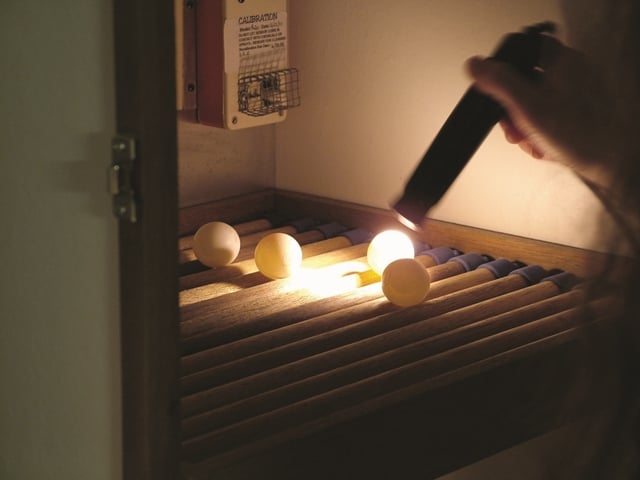
Egg weight loss, candling and the number of days of incubation will be valuable information to determine when the hatching process should start. This will also allow you to be ready and proactive in case assistance is required. Observations such as the time and date of the drawdown (of the internal membrane), the first and subsequent pips, the activity of the chick prior to the drawdown and once the laborious pipping has started, as well as the progression and location of the 5 total pips will all indicate whether or not there may be assistance required.
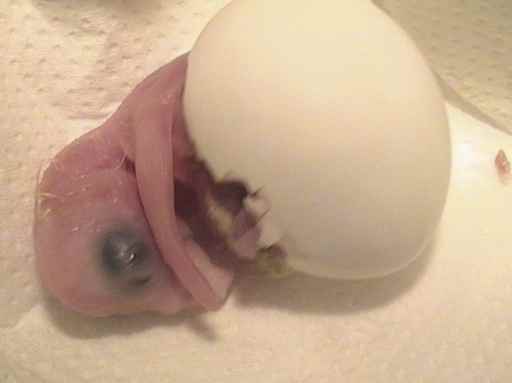
We encourage you to get mentorship from a fellow aviculturist or avian veterinarian that has acquired these skills to help you further your knowledge of egg monitoring.



